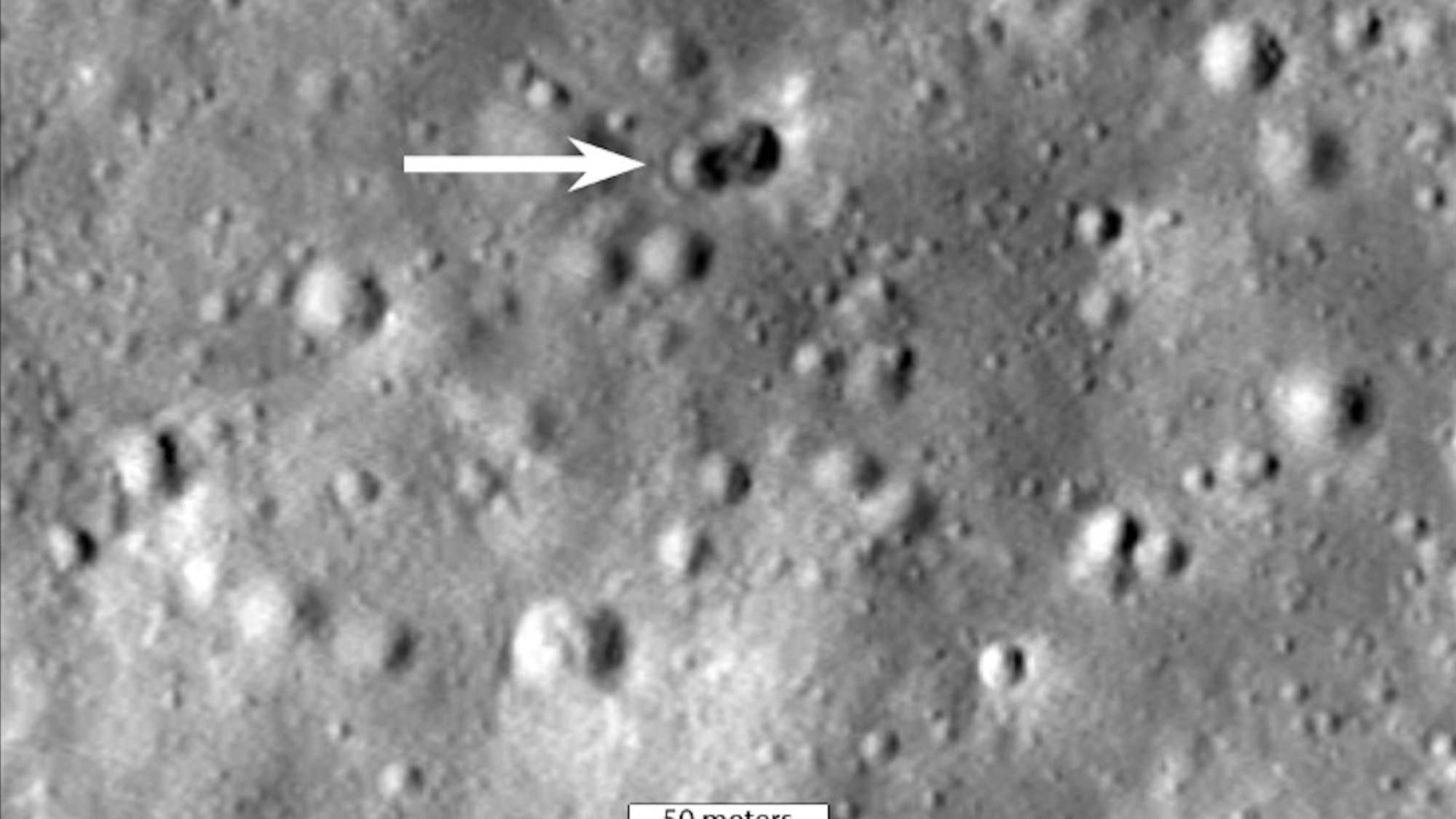
The case of the mysterious moon crash is now conclusively closed, a new study reports.
On March 4, 2022, a rocket body slammed into the moon's far side, blasting out a weird double crater about 95 feet (29 meters) wide. The crash did not come as a surprise; astronomers had been tracking the rogue rocket for weeks and predicted, with impressive accuracy, where and when it would slam into the lunar surface.
The mystery involved the identity of the impactor, which astronomers designated WE0913A. Initial observations suggested it might be the upper stage of the SpaceX Falcon 9 rocket that launched the Earth-observing DSCOVR satellite in February 2015. But, after further work, astronomers soon settled on a different candidate: The third and uppermost stage of the Long March 3C rocket that lofted China's uncrewed Chang'e 5-T1 mission around the moon in October 2014.
Related: The greatest moon crashes of all time
One of the teams that came to that conclusion last year — a group based at the University of Arizona (UA) — has now strengthened it to the point of confirmation.
"In this paper, we present a trajectory and spectroscopic analysis using ground-based telescope observations to show conclusively that WE0913A is the Long March 3C rocket body (R/B) from the Chang'e 5-T1 mission," the researchers, led by Tanner Campbell, a doctoral student in the UA's Department of Aerospace and Mechanical Engineering, wrote in a study that came out Thursday (Nov. 16) in the Planetary Science Journal.
These two lines of evidence — how the object was moving and what it was made of — leave little doubt about WE0913A's provenance, Campbell and his colleagues report.
Get the Space.com Newsletter
Breaking space news, the latest updates on rocket launches, skywatching events and more!
China, however, has attempted to sow doubt. More than that, in fact: Chinese officials have said that the Long March 3C's upper stage burned up in Earth's atmosphere shortly after the launch of Chang'e 5-T1, which tested technology ahead of the Chang'e 5 moon sample-return mission in 2020. But that assertion was denied by U.S. Space Command, which said last year that the object never reentered.
The new study also sheds further light on the distinctive crater that resulted from the March 2022 moon crash.
The researchers compared WE0913A's light curve — the change in its brightness over time — with those of thousands of hypothetical space objects, generated via computer simulations. And they found interesting differences.
"Something that's been in space as long as this is subjected to forces from the Earth's and the moon's gravity and the light from the sun," Campbell said in a statement. "So you would expect it to wobble a little bit, particularly when you consider that the rocket body is a big empty shell with a heavy engine on one side. But this was just tumbling end-over-end, in a very stable way."
The most plausible explanation for this behavior, team members said, is a dumbbell-like object — one with considerable mass at each end.
One such mass was the upper stage's two engines, which weighed a combined 2,400 pounds (1,090 kilograms) without fuel here on Earth. The mass at the other end of the rocket stage was probably in that ballpark as well, given how stably WE0913A was tumbling and the nature of the hole it gouged out of the lunar surface, Campbell said.
"This is the first time we see a double crater" in a moon impact, he said. "We know that in the case of Chang'e 5 T1, its impact was almost straight down, and to get those two craters of about the same size, you need two roughly equal masses that are apart from each other."
The mystery mass is too big to be just the standard instrument deck carried by the Long March 3C's third stage, which Campbell said likely weighed about 60 pounds (27 kg) or so. But that's just about the only inference we can make.
"Obviously, we have no idea what it might have been — perhaps some extra support structure, or additional instrumentation or something else," Campbell said. "We probably won't ever know."
Join our Space Forums to keep talking space on the latest missions, night sky and more! And if you have a news tip, correction or comment, let us know at: community@space.com.

Michael Wall is a Senior Space Writer with Space.com and joined the team in 2010. He primarily covers exoplanets, spaceflight and military space, but has been known to dabble in the space art beat. His book about the search for alien life, "Out There," was published on Nov. 13, 2018. Before becoming a science writer, Michael worked as a herpetologist and wildlife biologist. He has a Ph.D. in evolutionary biology from the University of Sydney, Australia, a bachelor's degree from the University of Arizona, and a graduate certificate in science writing from the University of California, Santa Cruz. To find out what his latest project is, you can follow Michael on Twitter.









